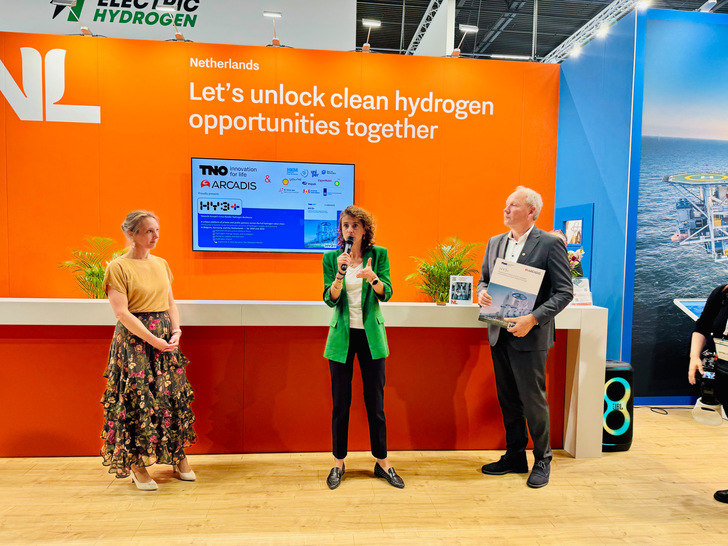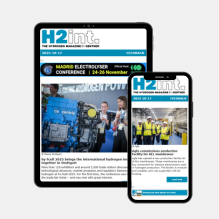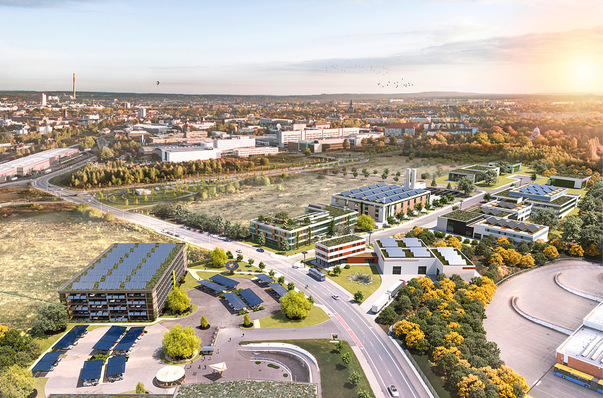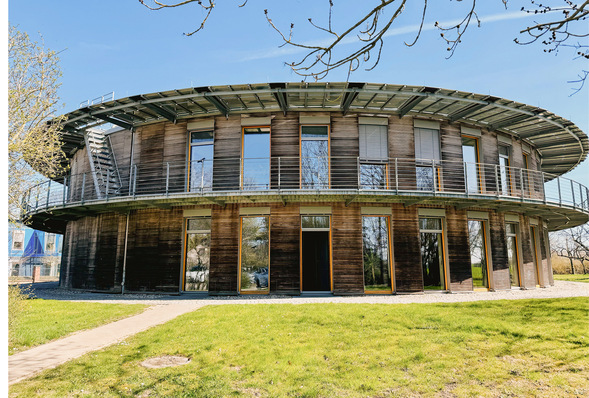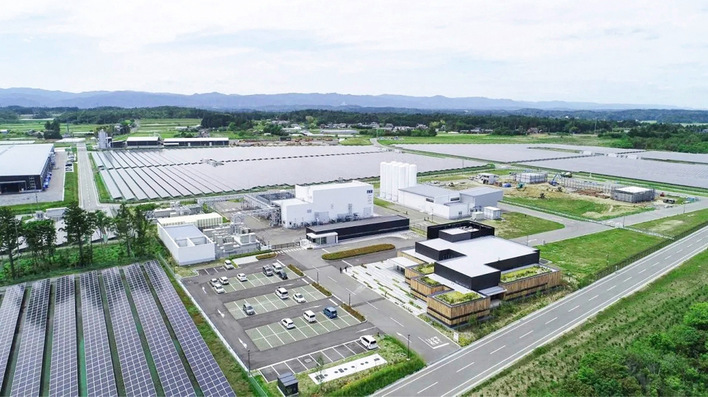„This is all happening now” was a frequently heard phrase at the Rotterdam event center „Ahoy“. What could almost have served as the unofficial motto of the World Hydrogen Summit sounded like a mantra of self-assurance—with a healthy dose of defiance. Many hydrogen projects are already in the implementation phase, i.e., under construction. Others, however, are facing delays or have been canceled, not least due to unfavorable regulatory conditions. Summit participants were able to witness firsthand the progress being made in the host city during a day trip to the Port of Rotterdam—some 40 kilometers from the city center, in the Maasvlakte industrial and port area, reclaimed from the North Sea through land reclamation. There, for example, Thyssenkrupp Nucera is currently building a 200 MW electrolyzer for Shell. In his keynote address at the summit, CEO Werner Ponikwar pointed out that 100 million tons of fossil-based hydrogen are already being produced today and must be decarbonized. „Even without additional applications, replacing this with green hydrogen would require 1,000 gigawatts of electrolyzer capacity.” And that, he said, is merely the absolute minimum, as additional demand would require even more. While some electrolyzer projects are currently being postponed or canceled, Ponikwar emphasized that a reality check reveals the immense potential of electrolysis.
H2Brazil unlocks Brazil’s potential with multi billion Euro investment
Here’s a brief look at what other regions of the world are planning in terms of hydrogen: During the World Hydrogen Summit, H2Brazil signed strategic agreements for two large-scale projects that could catapult the country to the forefront of the global energy transition. Brazil—considered one of the most promising hydrogen markets of the future—is planning its first industrial-scale green hydrogen production facility in Uberaba, with a total capacity of 820 megawatts by 2030. Whether this is realistic remains to be seen. With an investment volume of €1.24 billion, it represents the largest private investment in the region. The project could create around 1,000 direct jobs. A second major project is planned for the Port of Açu. These two projects—located in the Uberaba Free Trade Zone (Minas Gerais state) and the Port of Açu (Rio de Janeiro)—are expected to significantly contribute to establishing Brazil as a global hub for green hydrogen.
„With an abundance of renewable energy and a power grid internationally recognized as 100 percent green, we can produce green hydrogen and derivatives such as ammonia at globally competitive prices,” said Pedro Caçorino, CEO of H2Brazil. „That’s why Brazil is one of the most attractive markets for the energy transition—and why we are committed to long-term investment here.” With its flagship plants in Uberaba and the Port of Açu, H2Brazil is building a scalable platform for the production of green hydrogen and ammonia in Latin America.
From North America to Europe: Canada aims to become a leading hydrogen exporter
Positioning itself as a reliable partner for Europe’s energy transition, Canada is promoting hydrogen partnerships in Rotterdam with government incentives of up to 40 percent for clean hydrogen. The Atlantic Canada and Québec regions, in particular, offer abundant wind and solar resources that can be harnessed for new green hydrogen projects. For exports to Europe, Canada offers the shortest port-to-port shipping routes between North America and Europe, as well as 15 free trade agreements—including the Comprehensive Economic and Trade Agreement (CETA) with the EU, which guarantees tariff-free access to all EU member states.
“In light of ongoing concerns about energy security and global trade tensions, Canada stands out as a stable, reliable, and like-minded partner ready to advance hydrogen investment in our country,” said Laurel Broten, CEO of Invest in Canada. The country ranks among the world’s top 10 hydrogen producers and boasts 100 years of experience in leading hydrogen technologies. Its rapidly growing industry includes nearly 200 key players across the entire value chain. In the past five years alone, 80 new hydrogen projects have been launched. According to the national investment agency, the hydrogen alliance between Canada and Germany, established in 2022, underscores the growing importance of such partnerships.
Hydrom drives Oman’s hydrogen ambitions forward
Oman is also pursuing ambitious plans for green hydrogen production. At the summit in Rotterdam, the desert nation launched its third auction round. In this round, up to 300 square kilometers of land in Duqm—one of Oman’s key energy and logistics hubs—are being offered. Developers can design their project areas starting from 100 square kilometers. They also benefit from a nine-month preparation period and the option to feed surplus renewable electricity into the national grid—a step toward integrated energy systems.
Founded in 2022, Hydrom has already awarded nine green hydrogen projects in Duqm and Dhofar, representing investment commitments of over $50 billion. These projects are expected to produce nearly 1.5 million tons of green hydrogen annually by 2030, powered by nearly 35 GW of renewable energy. In parallel, Hydrom has signed ten memoranda of understanding (MoUs) to strengthen sector readiness across the entire value chain. These agreements cover areas such as logistics and transport planning, as well as the promotion of domestic production capacities.
Oman’s hydrogen projects are attracting leading global players, including Shell, BP, Engie, DEME, Marubeni, J-Power, POSCO, ACME, and Hyport Duqm. These initiatives combine gigawatt-scale renewable energy with desalination, electrolysis, and ammonia conversion for export. Port cities such as Duqm and Salalah are being developed as export hubs with integrated infrastructure for green ammonia and, in the future, liquid hydrogen. International agreements with the Netherlands, Belgium, and Germany are establishing hydrogen corridors to Europe, while partnerships with South Korea and Japan are opening routes to Asia.
Also signed in Rotterdam was a memorandum of understanding to establish hydrogen corridors across Europe, which will be navigable by hydrogen-powered trucks thanks to a dense refueling infrastructure.


